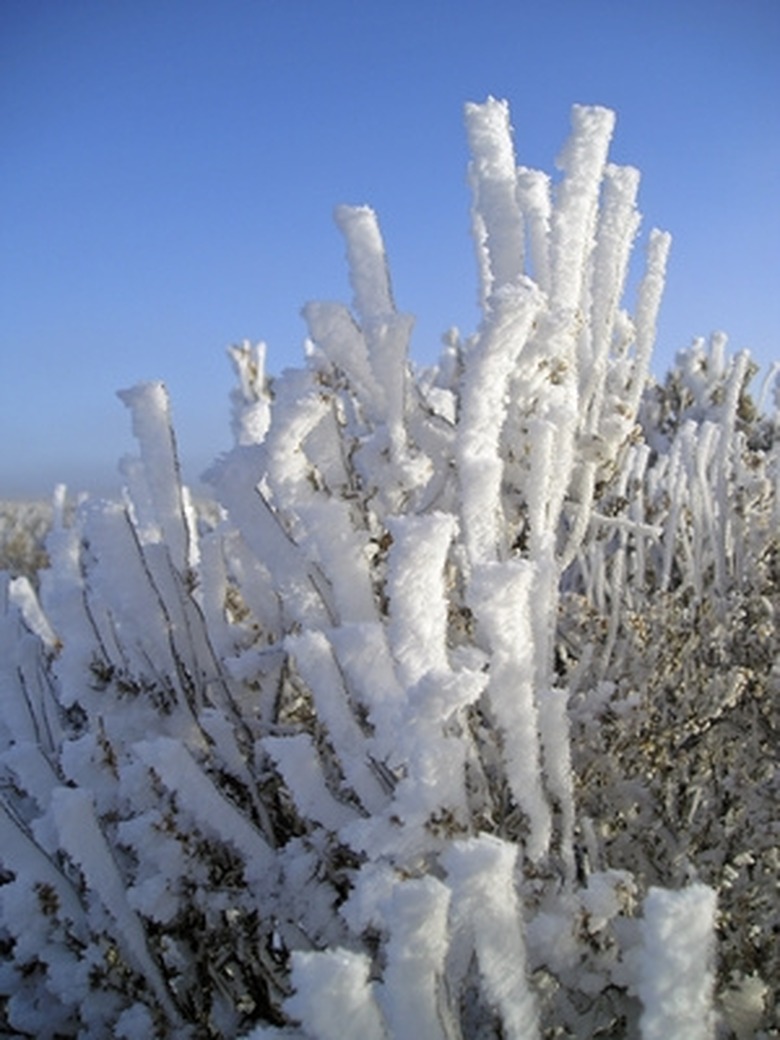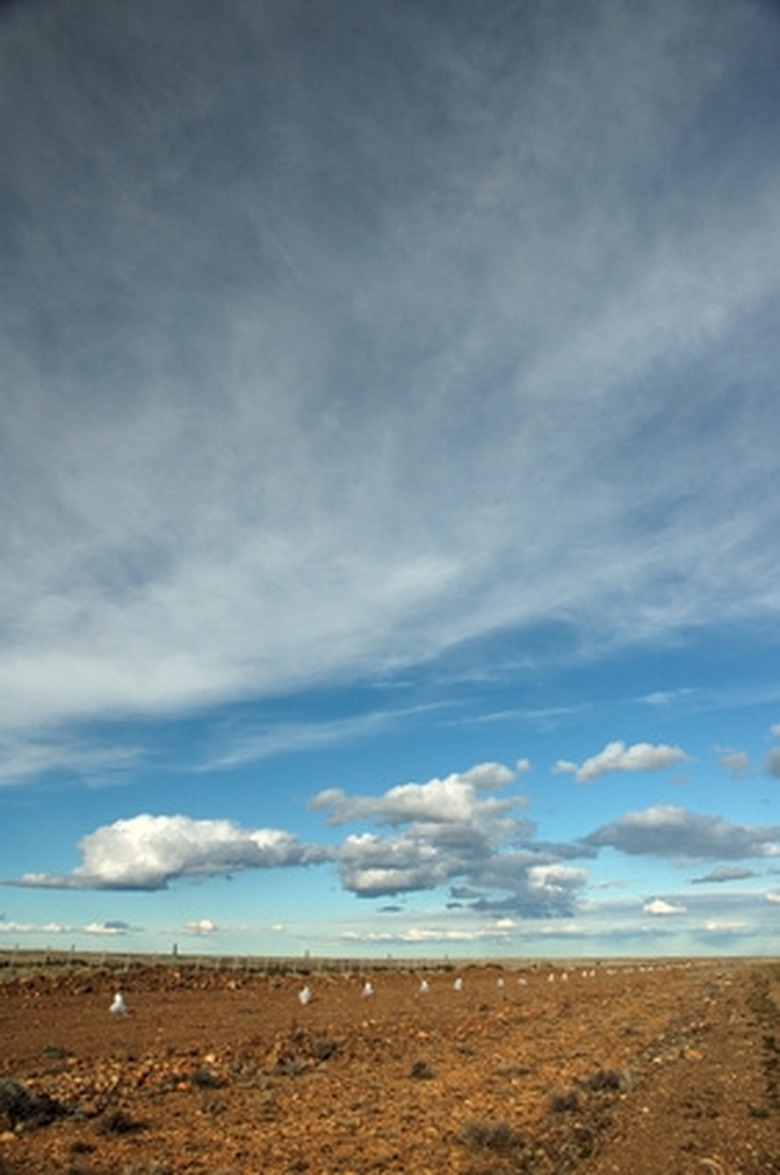Temperate Desert Plants
Step 1
Sagebrush, a member of the goosefoot family, adapts to the arid environment of the Great Basin in two different ways. Its roots spread out laterally in all directions just beneath the surface of the soil, covering a total area of about 600 square feet. Whenever it rains, these roots efficiently absorb much of the water that falls on the soil above these roots. Sagebrush also possesses leaves protected by little hairs that help the plant retain moisture.
Phreatophytes
Step 1
Phreatophytes are plants with long taproots that can reach water that lies far below the surface of the soil. The tamarisk and creosote bush are phreatophytes that grow in the Great Basin. The creosote bush also grows in Patagonia, as does Prosopis flexuosa, a phreatophyte related to the mesquite.
Step 2
- Sagebrush, a member of the goosefoot family, adapts to the arid environment of the Great Basin in two different ways.
- The tamarisk and creosote bush are phreatophytes that grow in the Great Basin.
Succulents and Parasites
Step 1
Not many cacti grow in the temperate deserts of the world. But their flora includes other succulents. The saxaul tree of the Gobi Desert in Asia stores water in its bark. This not only keeps the tree alive during extended periods of dry weather, but also helps the Cistanche deserticola, a parasitic plant that lives on the roots of this unusual tree.
Tiny Leaves
Step 1
Leaves allow water to escape into the atmosphere. So Forsellesia navadensis, the spiny greasewood plant of the Great Basin, produces small leaves that fall off in dry weather. The leaves of the ephedra are tiny scales that allow no water to escape. Both of these plants rely on green stems to produce their food.
Step 2
- Not many cacti grow in the temperate deserts of the world.
Halophytes
Step 1
The Great Basin contains extensive areas of alkaline or saline soil. Only halophytes (salt tolerant plants) can grow there. The glasswort (genus Salicornia) can live in the extremely salty soil near Salt Lake City. The iodine bush (Allenrolfea occidentalis) is another extreme halophyte. The tamarisk also tolerates moderately saline soil.
Grasses
Step 1
In the Great Basin many species of grass grow in clumps instead of covering the ground. Desert needlegrass and Indian ricegrass are examples. These and other species are indiscriminately called "bunchgrass" because of their clumping habit. Saltgrass (Distichlis spicata) is a halophyte. In Patagonia tufts of a grass called Festuca gracillima adorn the desert landscape.
Step 2
- The Great Basin contains extensive areas of alkaline or saline soil.
- The glasswort (genus Salicornia) can live in the extremely salty soil near Salt Lake City.
Roadside Growth
Step 1
Plants like the rubber rabbitbrush and the creosote bush thrive alongside the modern highways that run through the desert areas of the Great Basin. When it rains, water runs off the highway toward both sides, and this means that the roadsides will receive more moisture than other areas of the desert.


